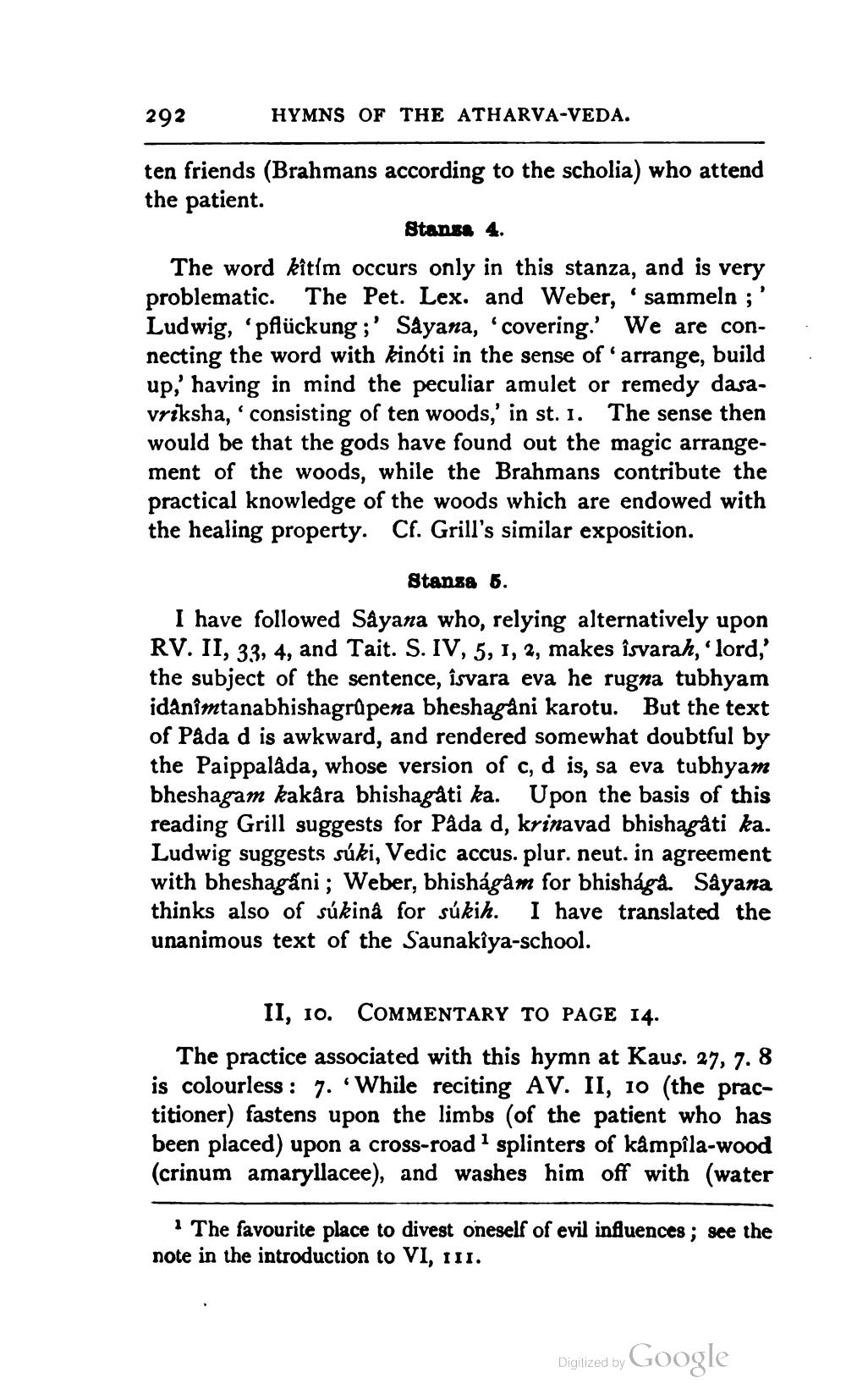________________
292
HYMNS OF THE ATHARVA-VEDA.
.
ten friends (Brahmans according to the scholia) who attend the patient.
Stansa 4. The word kitim occurs only in this stanza, and is very problematic. The Pet. Lex. and Weber, sammeln ;' Ludwig, 'pflückung ;' Sayana, 'covering.' We are connecting the word with kinoti in the sense of arrange, build up,' having in mind the peculiar amulet or remedy dasavriksha,' consisting of ten woods,' in st. 1. The sense then would be that the gods have found out the magic arrangement of the woods, while the Brahmans contribute the practical knowledge of the woods which are endowed with the healing property. Cf. Grill's similar exposition.
Stansa 6. I have followed Sayana who, relying alternatively upon RV. II, 33, 4, and Tait. S. IV, 5, 1, 2, makes isvarah, lord,' the subject of the sentence, isvara eva he rugna tubhyam idanimtanabhishagrūpena bheshagani karotu. But the text of Påda d is awkward, and rendered somewhat doubtful by the Paippalada, whose version of c, d is, sa eva tubhyam bheshagam kakåra bhishagåti ka. Upon the basis of this reading Grill suggests for Påda d, krinavad bhishagåti ka. Ludwig suggests súki, Vedic accus. plur. neut. in agreement with bheshagani ; Weber, bhishágâm for bhishágå. Såyana thinks also of súkina for súkih. I have translated the unanimous text of the Saunakiya-school.
II, 10. COMMENTARY TO PAGE 14. The practice associated with this hymn at Kaus. 27, 7.8 is colourless : 7. While reciting AV. II, 10 (the practitioner) fastens upon the limbs (of the patient who has been placed) upon a cross-road splinters of kampîla-wood (crinum amaryllacee), and washes him off with (water
The favourite place to divest oneself of evil influences ; see the note in the introduction to VI, 111.
Digized by Google




